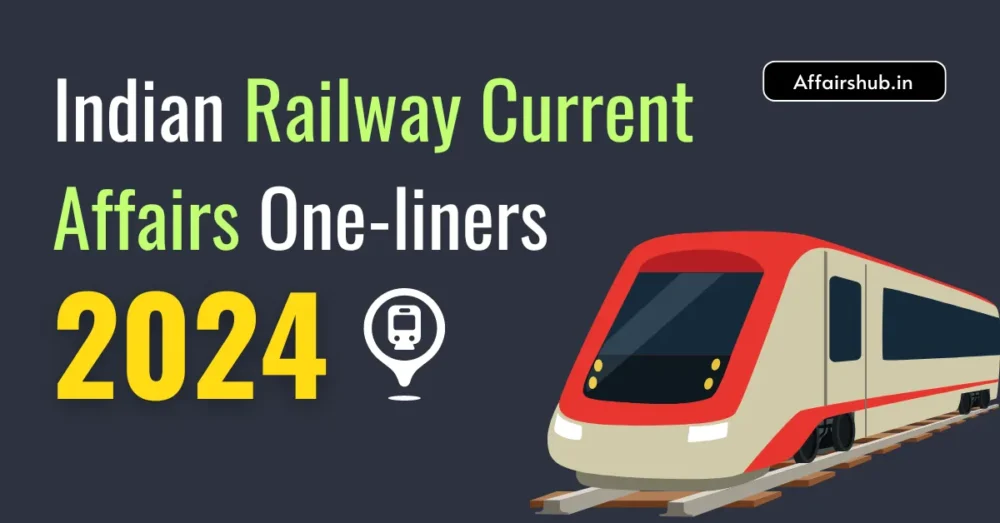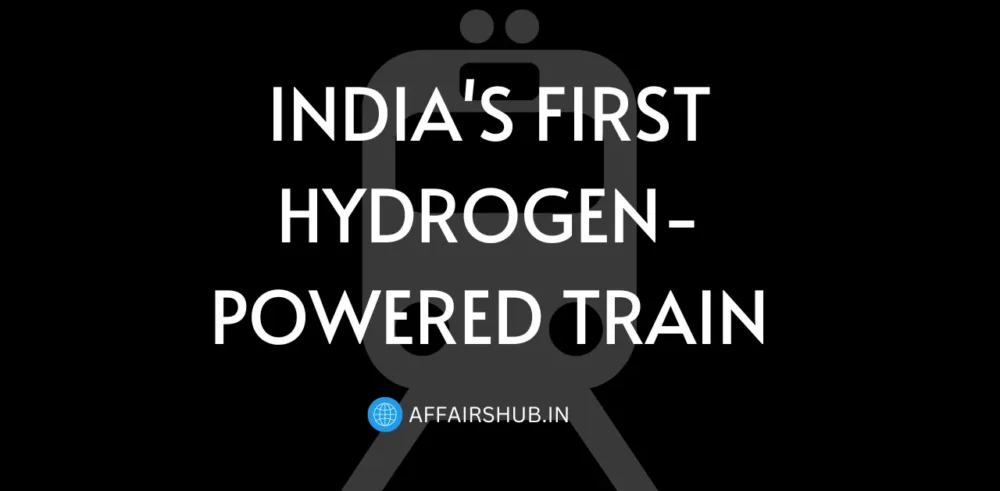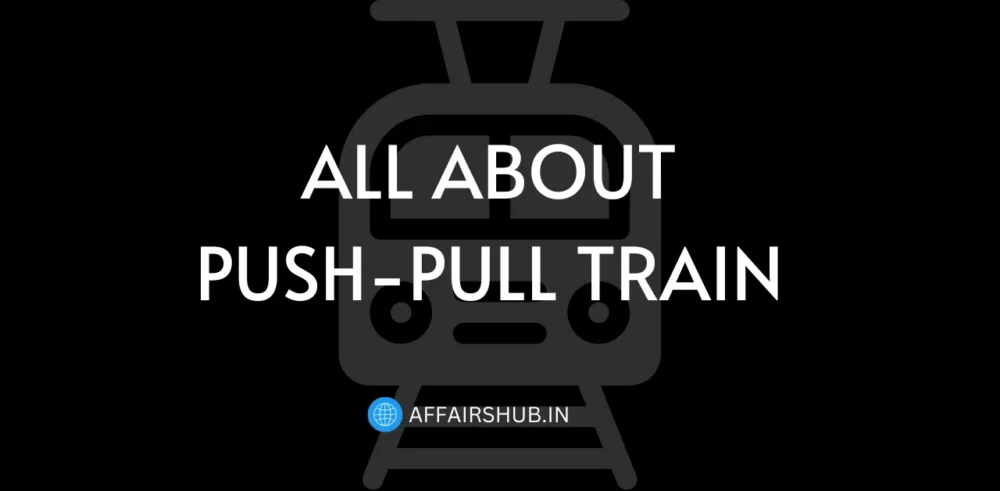IIT Madras has achieved a major milestone by completing India’s first Hyperloop train test track. This 410-meter track is a significant step towards revolutionizing transportation technology in India.
The project, led by the Avishkar Hyperloop team in collaboration with startup TuTr, aims to demonstrate the feasibility of Hyperloop technology, which could potentially cut travel time between major cities dramatically.
What is Hyperloop Technology?
Hyperloop technology is a cutting-edge transportation system that aims to revolutionize travel by achieving incredibly high speeds using low-pressure tubes.
◾Explore All Indian Railway Current Affairs
Concept of Hyperloop Technology
Hyperloop consists of pods or capsules that travel through a network of low-pressure tubes. This reduces air resistance, allowing the pods to achieve speeds much higher than traditional trains. The concept was popularized by Elon Musk in 2012 and has since gained traction worldwide.
How the Pods Operate
- Low-Pressure Tubes: The tubes are maintained at low pressure, creating a near-vacuum environment. This significantly reduces air resistance, enabling the pods to travel at high speeds with minimal energy loss.
- Magnetic Levitation: Many Hyperloop designs use magnetic levitation (maglev) technology to lift the pods off the track, eliminating friction between the pods and the track.
- Propulsion Systems: The pods are propelled using a combination of linear electric motors and air compressors, which push them forward through the tubes.
Passenger Capacity
- Pods: Each pod can carry around 24-28 passengers. The design of the pods ensures comfort and safety for the passengers, with features like climate control and emergency braking systems.
- Point-to-Point Travel: Hyperloop pods travel directly between destinations without intermediate stops, making it a highly efficient and time-saving mode of transport.
Hyperloop technology promises to transform the way we travel, offering a fast, efficient, and environmentally friendly alternative to current transportation systems.
Watch: Bharat’s first Hyperloop test track (410 meters) completed.
— Ashwini Vaishnaw (@AshwiniVaishnaw) December 5, 2024
👍 Team Railways, IIT-Madras’ Avishkar Hyperloop team and TuTr (incubated startup)
📍At IIT-M discovery campus, Thaiyur pic.twitter.com/jjMxkTdvAd
Project Announcement
- Union Railway Minister Ashwini Vaishnaw announced the completion of India’s first Hyperloop test track on Thursday.
- He shared the exciting news on social media, along with a video showcasing the 410-meter track.
- In his post, he praised the collaborative effort of Team Railways, IIT Madras’s Avishkar Hyperloop team, and TuTr (an incubated startup).
This announcement marks a significant milestone in India’s journey towards adopting futuristic transportation technology.
Collaboration to Advance Vacuum Train Technology
The Avishkar Hyperloop team from IIT Madras and TuTr, a startup incubated at the institute, have joined forces to advance vacuum train technology. This collaboration brings together the innovative minds of 76 undergraduate and postgraduate students from IIT Madras and the entrepreneurial spirit of TuTr.
The Avishkar Hyperloop team is responsible for designing and testing the Hyperloop system, while TuTr provides support with their expertise in startup incubation and technology development. Together, they aim to demonstrate the feasibility of Hyperloop technology and pave the way for its implementation in India.
Their combined efforts are crucial in making this futuristic transportation system a reality, potentially revolutionizing travel between major cities in the country.
Phases of Implementation
Phase 1: 11.5-kilometre Test Track for Technology Validation
India’s first Hyperloop test track, developed by IIT Madras’s Avishkar Hyperloop team in collaboration with TuTr, a startup incubated at the institute, is an 11.5-kilometre track designed to validate and certify the technology. This track will be used to demonstrate the feasibility and reliability of the Hyperloop system, which aims to achieve speeds of up to 1,100 km/h in a vacuum-sealed, frictionless environment. The goal is to ensure that the technology works as intended before scaling up.
Phase 2: Expansion to Nearly 100 Kilometres
Upon successful trials of the initial 11.5-kilometre track, the plan is to expand the test track to nearly 100 kilometres. This expansion will lay the groundwork for a full-scale Hyperloop system, potentially connecting major cities like Mumbai and Pune. The expanded track will further test the system’s operational capabilities and efficiency, bringing India closer to implementing this futuristic mode of transportation.
Speed and Efficiency of Hyperloop
Operational Speed: Hyperloop trains are designed to operate at speeds around 360 km/h (approximately 224 mph). This operational speed is significantly faster than traditional rail transport and even some air travel routes.
Maximum Speed: The maximum speed of Hyperloop trains can reach up to 1,100 km/h (around 683 mph). This incredible speed is achieved by minimizing air resistance and friction within the system.
Vacuum-Sealed, Frictionless Environment
The Hyperloop system operates within vacuum-sealed tubes. These tubes are maintained at low pressure, which significantly reduces air resistance. By doing so, the pods can travel at high speeds with minimal friction.
The pods, functioning as pressurized vehicles, travel through these low-pressure tubes, allowing for frictionless movement. This environment not only enables the high speeds but also ensures energy efficiency and smooth travel.
Mumbai-Pune Hyperloop Project
The Mumbai-Pune Hyperloop project is an ambitious initiative aimed at revolutionizing transportation between these two major cities in India. Here are some key details:
Project Overview
- Led by IIT Madras: The project is spearheaded by the Avishkar Hyperloop team at IIT Madras in collaboration with TuTr, a startup incubated at the institute.
- Two-Phase Implementation: The project will be executed in two phases. The first phase involves building an 11.5-kilometer test track to demonstrate the system’s reliability. If successful, the track will be expanded to 100 kilometers in the second phase.
- Hyperloop Technology: The Hyperloop system uses low-pressure tubes to carry pods at incredible speeds, with an operational cruising speed of around 360 km/h and a maximum speed of up to 1,100 km/h.
Potential Travel Time Reduction
- Current Travel Time: The current travel time between Mumbai and Pune by road is approximately 3-4 hours, and by flight is around 1 hour (including pre-flight procedures and travel to/from airports).
- Hyperloop Travel Time: The Hyperloop project aims to reduce the travel time between Mumbai and Pune to just 25 minutes. This would be faster than flying and significantly quicker than driving.
Benefits
- Speed: Traveling at speeds up to 1,100 km/h, the Hyperloop promises ultra-high-speed inter-city connectivity.
- Cost: One-way tickets are expected to cost between Rs 1,000 and Rs 1,500, making it a cost-effective alternative to flights.
- Environmental Impact: The Hyperloop system is designed to be environmentally sustainable, offering a cleaner mode of transportation.
This project represents a significant leap towards futuristic transportation systems in India, potentially transforming the way people travel between major cities.
Conclusion
The completion of India’s first Hyperloop train test track by IIT Madras marks a significant milestone in the country’s transportation landscape. This initiative showcases India’s commitment to embracing cutting-edge technology and revolutionizing travel.
Importance of India’s Hyperloop Initiative: The Hyperloop project represents a leap forward in transportation innovation. By reducing travel times dramatically and offering a more efficient and sustainable mode of travel, Hyperloop technology has the potential to transform the way people move between cities.
Potential Impact on Transportation and Connectivity: The implementation of Hyperloop systems could drastically cut travel time between major cities, such as reducing the Mumbai-Pune journey to just 25 minutes. This not only enhances connectivity but also opens up new opportunities for economic growth, reduces congestion on roads and airways, and promotes sustainable travel.
India’s Hyperloop initiative is a pioneering step towards the future of transportation, promising faster, more efficient, and environmentally friendly travel solutions. As the project progresses, it holds the potential to set new benchmarks in the global transportation industry.
FAQs
The Hyperloop is a high-speed transportation system where pods travel through low-pressure tubes, reducing air resistance and enabling ultra-fast travel.
The test track is developed by IIT Madras in Tamil Nadu.
It will offer faster travel, reduce carbon emissions, and provide a sustainable alternative to traditional transportation.
Major challenges include technological hurdles, high costs, policy alignment, and public acceptance.
While no official timeline exists, the completion of the test track brings India closer to realizing commercial Hyperloop systems.
Related Links






